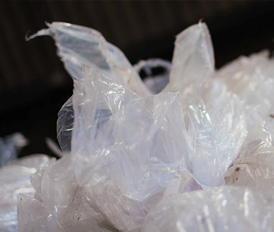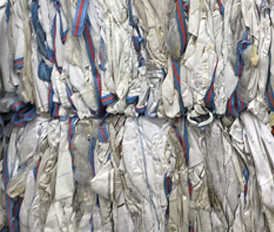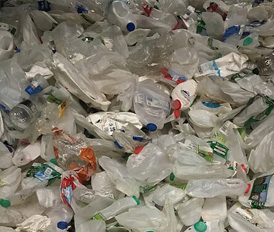The EU’s Circular Economy Action Plan
by George Kiernan
Pakire Polymers News
Circular Economy Action Plan
The EU’s Circular Economy Action Plan was first presented to the European Parliament in March 2020 and was voted through in February 2021 with 574 votes in favour and 22 against (99 abstentions). The action plan, the central pillar of the European Green Deal, will now be scrutinised by the European Council before finally being passed onto the Commission to approve the measures within the 5-year plan.
Virginijus Sinkevicius, the European Commissioner for the Environment, Oceans and Fisheries, said, “There is no more time for hesitation… The action plan underlines the need to reduce our consumption footprint, to bring it back within planetary boundaries, and to switch to an economic model that gives back to the planet more than it takes away.”
Sinkevicius pointed out that the way we extract and process natural resources is responsible for 50% of greenhouse gases and 90% of biodiversity loss and water stress. Consumption of biomass, fossil fuels, metals and minerals is set to double over the next 40 years and our waste production rates are set to increase as much as 70% by 2050. These projected figures show why the decoupling of resource use and economic growth is unavoidable.
Commitment to Change
The EU Parliament showed concerns over the vagueness of many of the promises made in the Circular Economy Action Plan, particularly those regarding limitation of environmental impact and resource consumption. It therefore exercised the power to change the wording of the document during the approval process to address these concerns.
Simona Bonafe MEP said, “If circularity means giving products as long a life as possible, preventing waste production really is the litmus test for an effective circular economy system.”
The EU Parliament has required that member states must come up with binding minimum objectives for the transition towards a greener, more sustainable economic model. These targets will include things such as states acquiring goods and services with reduced environmental impact.
Bonafe said that this is necessary “Otherwise, we’re asking countries to recycle but nothing really gets moving because there’s no market for secondary raw materials.”
Key Value Chains
Within the Circular Economy Action Plan, there are seven key value chains that institutional efforts will focus on:
- Batteries and Vehicles
- Packaging
- Plastics
- Textiles
- Electronics and ICT
- Construction and Buildings
- Food, Water and Nutrients
The circular economic concept is not a new one; the EU began the shift towards this economic model some time ago. As far back as 2018, rules were implemented regarding products’ end-of-life. These rules included recycling targets for packaging and municipal waste, as well as limits on the percentage of waste material that can be sent to landfill –by 2035 it must be below 10%.
So, whereas circular economics isn’t new, the EU Circular Economic Action Plan is different to what we’ve seen and heard in the past.
Adrian Patriciello, MEP for the European People’s Party, has said that he is satisfied with the document as approved by Parliament, whilst being “aware that only a global mindset, able to ensure that circularity and sustainability principles are applied in all phases of the value chain, can transform our economy into a truly circular one.”
New Regulations
Even though the end-of-life of products has been regulated since as far back as 2018, addressing the full scope of the problem must now extend far beyond this. Looking only at end-of-life ignores the fact that 80% of a product’s environmental impact is due to its design. Up to this point, only energy-related products have had criteria set out for eco-friendly design. As Patriciello explains, this issue is why, “we asked the Commission to extend the directive’s scope of action to other sectors as well.”
Making sustainable decisions needs to be as easy as possible for consumers; Bonafe said, “In addition to the Ecolabel, we asked that steps be taken towards creating green labels based to products’ environmental impact.”
Opportunity
The world economy has been in crisis since the beginning of the coronavirus pandemic; the silver lining in this situation is that it offers us a unique opportunity to start anew. This is the exact reason the €750 billion Next Generation EU fund was created. The Recovery and Resilience Facility, the main instrument of the fund, will ensure that 37% of loans and funding will be in pursuit of the Green New Deal. The ultimate goal of the EU is to reach carbon neutrality; whether or not this is achieved is dependent on us being able to achieve a truly circular economy.
Commenting on the pandemic, Bonafe said, “There was a moment when it looked like the pandemic-caused crisis might erase all our work, but the disaster was avoided… It represents an enormous success and change of perspective.”
The European Union is looking to set the standard for the rest of the world in terms of commitment to sustainability. Patriciello said, “National governments are called upon to introduce legislative measures that follow the environmental direction set by the EU, and significant resources to follow this path will be put at their disposal… In Italy’s case, almost €69 billion will go towards funding activities connected to the green revolution.”
The money is there. The EU parliament is behind the Circular Economy Action Plan. It is up to the member states to take advantage of the opportunities in front of them and put these resources to use in achieving a truly circular economy and a greener future for all.
Share article on your social media
More related articles
Work with Us
If you have a passion for recycling and for achieving a sustainable future, then we want to hear from you.





